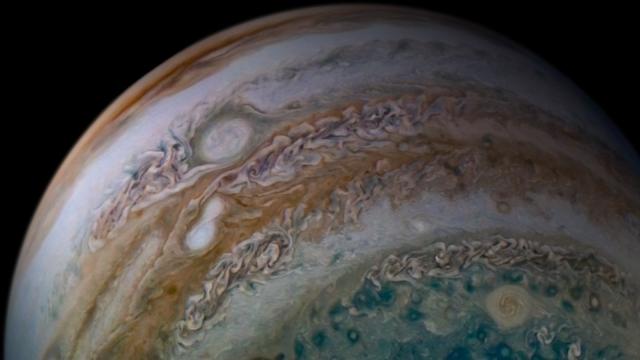After successfully landing a rover on Mars last year, China has its interplanetary ambitions set on farther destinations in the solar system. As part of its expanding Tianwen program, China hopes to launch two spacecraft in the early 2030s to explore Jupiter and Uranus.
The plan is to launch a pair of spacecraft together aboard a Long March 5 rocket, in which the larger probe would heads towards Jupiter and the smaller spacecraft would make its way further out towards Uranus. The details of the mission, dubbed Tianwen-4, were revealed by Wang Qiong during a presentation at the International Astronautical Congress held in Paris on Wednesday, Space.com reported. Wang works out of the China National Space Administration’s Lunar Exploration and Space Engineering Centre.
Tianwen-4: China to launch a combined pair spacecraft towards Jupiter via Venus and Earth flybys. One will study the Jovian system and enter orbit around Callisto, the smaller will use a gravity assist to head for a flyby of Uranus. Launch ~ 2030. Asteroid flyby also included. pic.twitter.com/3pyG9oS6zO
— Andrew Jones (@AJ_FI) September 21, 2022
According to China’s ambitious plan, the spacecraft will use a Venus flyby followed by two Earth flybys to set course on a trajectory towards the outer solar system. The spacefaring duo will separate at Jupiter, with one entering into an orbit around the Jovian moon Callisto and the other continuing on towards Uranus. Before separation, however, the duo may investigate an unnamed asteroid. It’s a fairly elaborate plan, especially considering that China has only ever sent one mission to Mars as part of its interplanetary program.
China’s Tianwen program, named after ancient Chinese poet Qu Yuan’s “Questions to Heaven,” aims to explore objects of the solar system and flex the country’s interplanetary capabilities. Tianwen-1 landed a spacecraft on Mars in May 2021, making China the only other nation besides the United States to accomplish that feat (the Soviets landed a rover on Mars in 1971, but it died 20 seconds after landing).

China’s upcoming Tianwen-2 mission is designed to explore a near-Earth asteroid called Kamo’oalewa and snag a piece of it for a sample return mission that’s scheduled to launch in 2025. China then wants to return samples from Mars as part of the future Tianwen-3 mission, which will involve two launches, both scheduled for 2028. Tianwen-3 aims to return the Martian samples back to Earth in July 2031, about two years before NASA’s own Mars sample return mission, according to The Planetary Society.
China has been building up its space program to compete in a new space race with the U.S. as the main contender. Through its lunar exploration program, the Chang’e-3 lunar lander touched down on the Moon in 2013, and its successor Chang’e-5 returned samples from the lunar surface to Earth in December 2020. China has also claimed that it will land astronauts on the Moon by 2030 and build a lunar base to establish a sustainable presence on the Moon.
The country’s lunar ambitions alone make it a strong rival against the U.S. in the ongoing space race, and the newly proposed interplanetary missions — if successful — could further establish its position as one of the main spacefaring nations.
More: China and the UAE Will Work Together on a Moon Rover Mission
